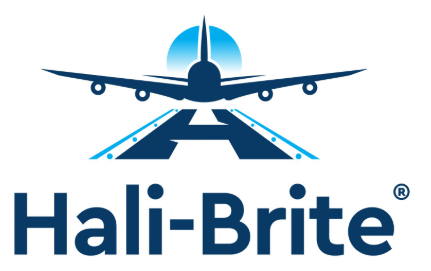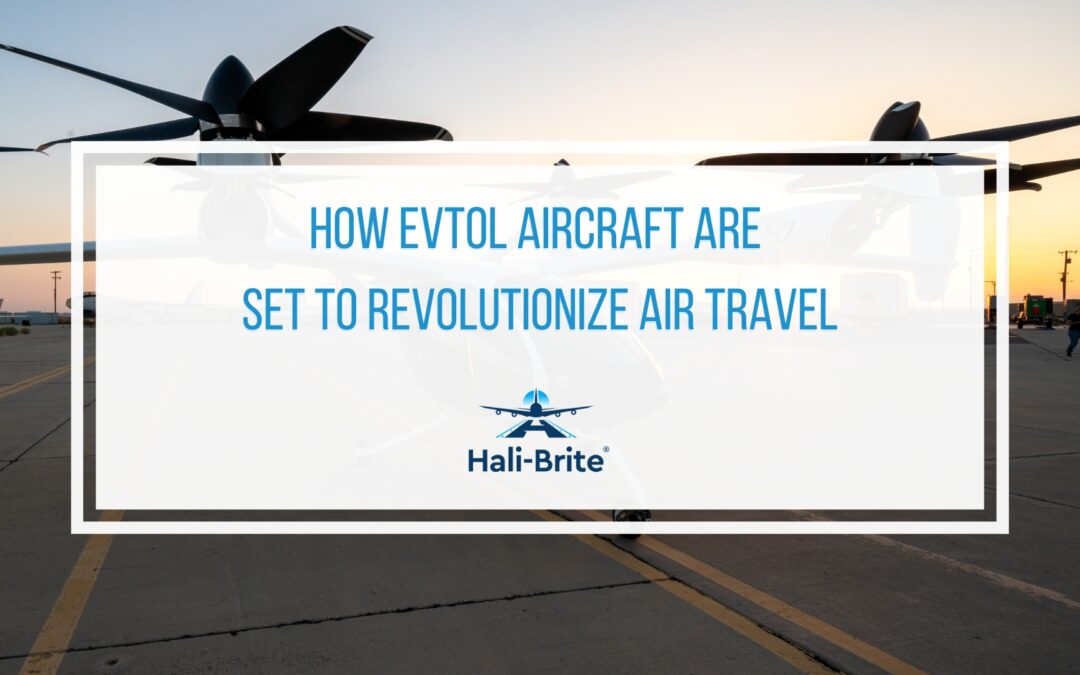In recent years, the aviation landscape has welcomed a major game-changer: electric vertical takeoff and landing (eVTOL) aircraft. Unlike traditional airplanes and helicopters, these cutting-edge machines promise a new era of flight that is more efficient, quieter, and environmentally friendly. eVTOL aircraft are a central component of Advanced Air Mobility (AAM), a concept that aims to redefine how you travel short distances, especially in congested urban areas.
- How eVTOL Aircraft Are Revolutionizing Air Travel
- The Critical Role of Vertiports in Supporting eVTOL Operations
- Challenges in Developing Vertiport Infrastructure
- Build the Future of Air Mobility with Hali-Brite’s Vertiport Solutions
Rather than relying on runways or large airports, eVTOL aircraft lift off vertically, similar to a helicopter. However, these aircraft use electric power, making them far cleaner and quieter than conventional helicopters, which aligns closely with global efforts to reduce carbon emissions and create a more sustainable future. Beyond environmental benefits, eVTOL aircraft have the potential to transform daily commutes, cargo transport, and even medical evacuations.
Let’s explore how eVTOL aircraft are transforming air travel and why the development of vertiports is central to that future.
How eVTOL Aircraft Are Revolutionizing Air Travel
Here are some of the most compelling reasons why eVTOL aircraft are set to revolutionize air travel:
Reduced Emissions
Running on electric power, eVTOL aircraft eliminate the need for conventional jet fuel. Electric propulsion produces fewer emissions, which can significantly cut down the overall environmental impact of the aviation industry. If you’re concerned about sustainability, the shift to greener flights is a big deal. Being able to travel through the air while minimizing your carbon footprint—that’s what eVTOL aims to achieve.
Quieter Operations
If you’ve ever been startled by the roar of a helicopter flying overhead, you might appreciate how much quieter eVTOL aircraft can be. Electric motors produce less noise than traditional combustion engines, making them more appealing for urban operations. Cities around the world are already grappling with noise pollution, so the reduced decibel levels of eVTOL flights can make a big difference in gaining the support of local communities.
Lower Operational Costs
While upfront costs for research, development, and batteries are still significant, eVTOL aircraft generally have fewer moving parts and can be easier to maintain. That means lower operational costs for operators, which can, over time, lead to more affordable ticket prices for you as a passenger. Plus, eVTOL aircraft can take off and land vertically—no runways required—potentially reducing infrastructure costs compared to traditional airports.
Faster Urban Transportation
In dense metropolitan areas, road congestion can be a relentless daily struggle. eVTOL aircraft offer a chance to bypass traffic bottlenecks by taking to the air. Instead of spending hours in rush-hour traffic, you can reach your destination in a matter of minutes. It’s an exciting possibility that can reshape how you plan your day, where you choose to live, and even how cities are designed.
The Critical Role of Vertiports in Supporting eVTOL Operations
While eVTOL Aircraft might take center stage in most discussions, an equally vital component of the air travel revolution is the eVTOL vertiport. A vertiport is a dedicated facility where eVTOL Aircraft can land, take off, charge, and undergo necessary maintenance. Vertiports are built specifically to accommodate the vertical flight and rapid turnaround times of eVTOL operations.
The Federal Aviation Administration (FAA) has already provided specifications for these facilities, which include guidance on the FATO and TLOF areas, safety area, and visual flight rules (VFR) approach/departure. Existing heliports might be used as vertiports for eVTOL aircraft operation, provided that the following additional requirements are present:
-
- Adequate AAM Aircraft Parking Zones
To ensure safe and efficient passenger movement, parking zones should be separate from active takeoff and landing pads. The arrangement allows for loading and unloading without interfering with arriving or departing aircraft, and it provides space for idle vehicles awaiting demand.
-
- Infrastructure Sizing and Dimensional Geometry
Facilities must comply with updated FAA standards. Because eVTOL aircraft might differ in size and performance from helicopters, the landing and safety zones for vertiports might need modifications to accommodate specific AAM aircraft.
-
- Charging Stations
Rapid and safe charging is critical for electric eVTOL batteries. Proper cooling stations and storage for hazardous materials must be in place to handle potential fire risks. High-capacity charging infrastructure ensures minimal turnaround time between flights.
-
- Weather Station
Pilots rely on accurate, real-time weather data—particularly regarding wind speed, direction, and visibility. Vertiports located away from established airports might need their own Automated Surface/Weather Observing Systems (ASOS/AWOS).
Properly designed vertiports are essential for eVTOL operations to achieve safety, scalability, and efficiency. Without dedicated infrastructure, eVTOL fleets can’t reliably serve the growing demands of AAM. The presence of a well-planned vertiport network allows for quick and safe vertical operations, smoother passenger experiences, and the flexibility required to expand AAM in different locations.
Challenges in Developing Vertiport Infrastructure
While the vision for eVTOL aircraft is straightforward, the reality of managing multiple low-altitude flights across a city might be complicated. Air traffic control systems designed for lower-altitude airspace become necessary, especially when eVTOL aircraft start flying routinely over populated areas. On top of that, even with quieter operations, some people might have concerns about noise, safety, and visual clutter. Gaining community support often involves outreach, education, and demonstration flights to show the benefits and mitigate concerns.
Furthermore, regulations can either accelerate or hold back AAM adoption. Recently, the FAA issued a final rule to facilitate the certification of powered-lift pilots, clarify operating rules for powered-lift aircraft, and integrate these vehicles safely into the National Airspace System (NAS). These regulatory developments aim to create a clear roadmap for integrating eVTOL aircraft into existing aviation structures. Even so, keeping pace with emerging guidelines, addressing pilot training requirements, and adapting ground infrastructure remain significant challenges for vertiport stakeholders.
Build the Future of Air Mobility with Hali-Brite’s Vertiport Solutions
The eVTOL revolution isn’t just a concept anymore. It’s well on its way to becoming a reality, and if you’re involved in infrastructure planning or aviation services, there’s never been a better time to prepare. Building the future of air mobility hinges on having the right safety and lighting solutions in place at every vertiport.
With decades of experience in aviation lighting and compliance, Hali-Brite specializes in FAA-compliant lighting systems designed to keep both existing and emerging air travel solutions running smoothly. We can guarantee your vertiport has all the necessary lighting equipment, from our Wind Cone L-806 and Vertiport LED Beacon L-801(H)L to other cutting-edge lighting setups that guide eVTOL pilots safely.
If you want to be at the forefront of the revolution, now is the time to invest in reliable, high-quality vertiport lighting systems. Contact us today at (218) 454-095 or here, and let us help you translate your vision into a fully operational vertiport that’s safe, efficient, and ready for the growing demand of AAM.


